Get information, free resources and supporting documents to assist your work in Heatstroke Prevention.
Click on the “+” sign next to each heading below to view the content.
Get information, free resources and supporting documents to assist your work in Heatstroke Prevention.
Click on the “+” sign next to each heading below to view the content.
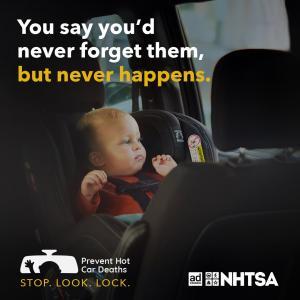 Child Safety
Child SafetyOverview: Heatstroke is one of the leading causes of non-crash fatalities among children.
Traffic Safety Marketing: Heatstroke Prevention Toolkit
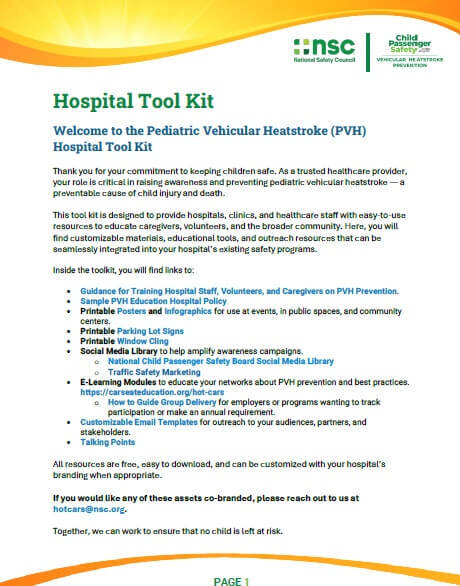 On average, 37 children die each year in the U.S. from being left alone in hot cars—tragic and entirely preventable incidents known as pediatric vehicular heatstroke. A vehicle’s interior can become deadly in minutes, and a child’s body heats up three to five times faster than an adult’s. These heartbreaking losses often happen during a moment of distraction or routine change.
On average, 37 children die each year in the U.S. from being left alone in hot cars—tragic and entirely preventable incidents known as pediatric vehicular heatstroke. A vehicle’s interior can become deadly in minutes, and a child’s body heats up three to five times faster than an adult’s. These heartbreaking losses often happen during a moment of distraction or routine change.
To help prevent these tragedies, the National Safety Council has developed a series of free, practical toolkits and assets designed to raise awareness and empower action across every sector of the community.
Pediatric Vehicular Heatstroke Prevention Toolkits are tailored for:
Note: Tool kit files are shared via a cloud-based platform. If you have difficulty accessing the files, please contact Alexis Kagiliery, Program Manager, at [email protected] for assistance.
Each toolkit includes:
Whether you’re working with families, customers, employees, or neighbors—you can help save lives. Explore the toolkits and use these resources to make a difference today.
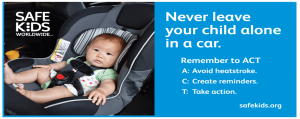 Tips and downloadable resources: safekids.org/heatstroke
Tips and downloadable resources: safekids.org/heatstrokeTake Action Toolkit to Prevent Heatstroke
 Keeping Cars Safe for Kids: Working to Prevent Pediatric Heatstroke. This discussion focuses on ways to help prevent pediatric heatstroke through public awareness and technology advancements.
Keeping Cars Safe for Kids: Working to Prevent Pediatric Heatstroke. This discussion focuses on ways to help prevent pediatric heatstroke through public awareness and technology advancements.
Resources and information, including a voluntary commitment by vehicle manufacturers
Prevent Child Deaths in Hot Cars: healthychildren.org
Protecting Children from Extreme Heat: Information for Parents
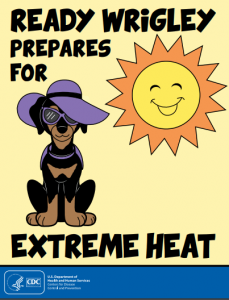 Information about Extreme Heat
Information about Extreme Heat
Resource for children: Ready Wrigley Prepares for Extreme Heat
Watch: Kristin Kingsley, a mechanical engineer and auto safety policy consultant, moderates this recorded webinar. The featured speakers: Amy Artuso, senior program manager with the National Safety Council and former chair of the National Child Passenger Safety Board; and Jan Null, an adjunct professor/lecturer of meteorology at the University of San Francisco and San Jose State University.
 The Juvenile Products Manufacturers Association is actively involved in efforts to prevent children from dying in hot cars. JPMA believes that the most universal way to avert these tragedies is to equip new passenger vehicles with reminder systems and consider the potential for retrofitting existing vehicles with such systems.
The Juvenile Products Manufacturers Association is actively involved in efforts to prevent children from dying in hot cars. JPMA believes that the most universal way to avert these tragedies is to equip new passenger vehicles with reminder systems and consider the potential for retrofitting existing vehicles with such systems.
Read the full statement: JPMA Hyperthermia/Heatstroke Position Statement.
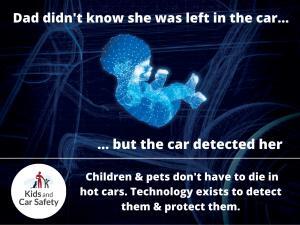 Heatstroke
HeatstrokeDownload these free resources to raise awareness of risks and prevent more tragedies:
Find out what states have laws making it illegal to leave a child unattended in a vehicle.
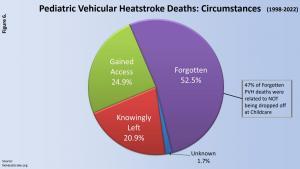 Get up-to-date tracking of pediatric vehicular heatstroke deaths and vehicle heating information from San Jose State University Adjunct Professor of Meterology Jan Null: noheatstroke.org
Get up-to-date tracking of pediatric vehicular heatstroke deaths and vehicle heating information from San Jose State University Adjunct Professor of Meterology Jan Null: noheatstroke.org
 Prevent Child Injury is a national group of researchers, health and public health professionals, educators, child care professionals, parents, and other child advocates, working together to prevent injuries to children and adolescents in the U.S.
Prevent Child Injury is a national group of researchers, health and public health professionals, educators, child care professionals, parents, and other child advocates, working together to prevent injuries to children and adolescents in the U.S.
Prevent Child Injury offers toolkits of communications resources on injury topics and promotes coordinated outreach about prevention of child injury.
Heatstroke: Kids in Hot Cars – All of our resources are located here.